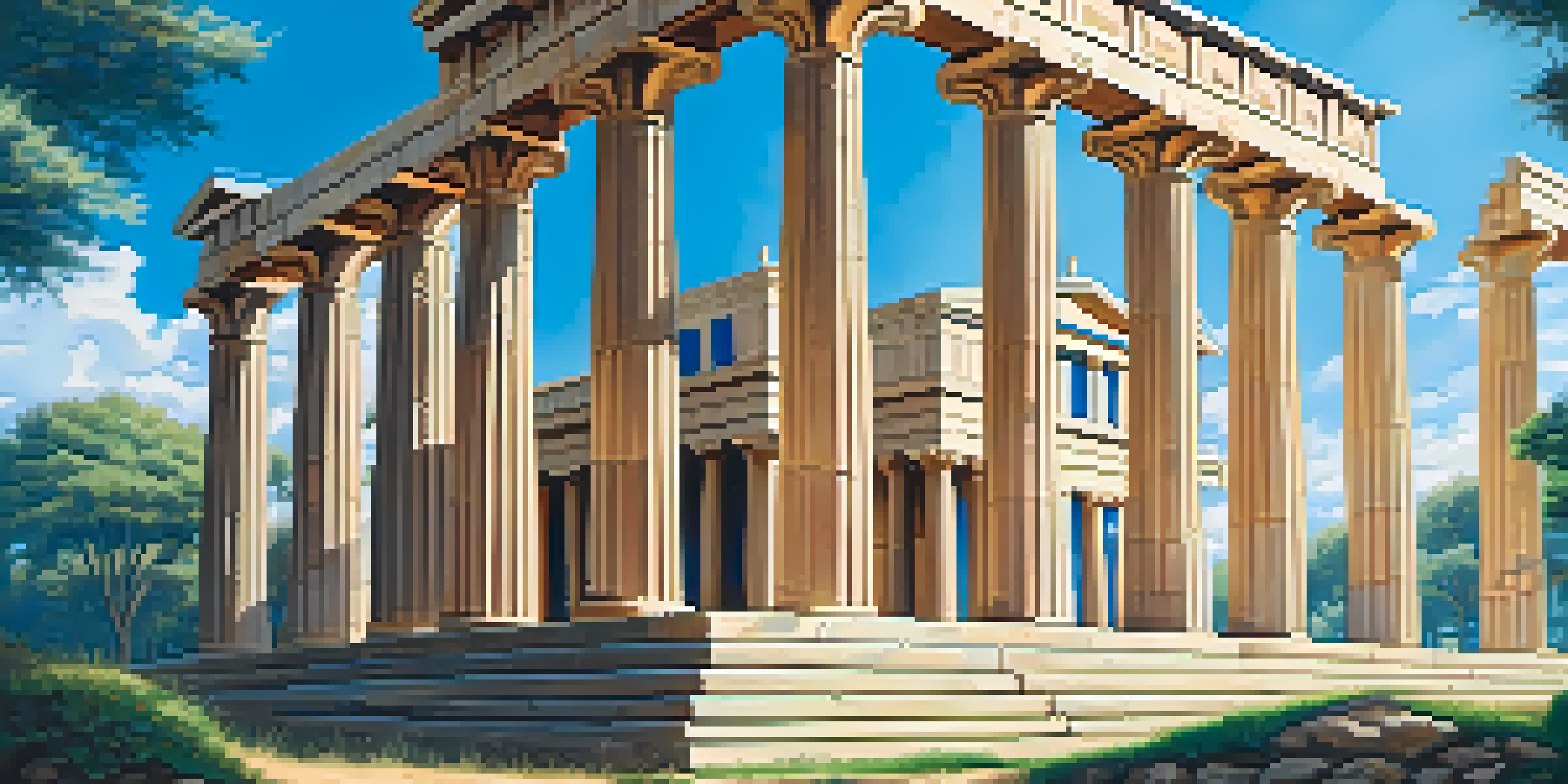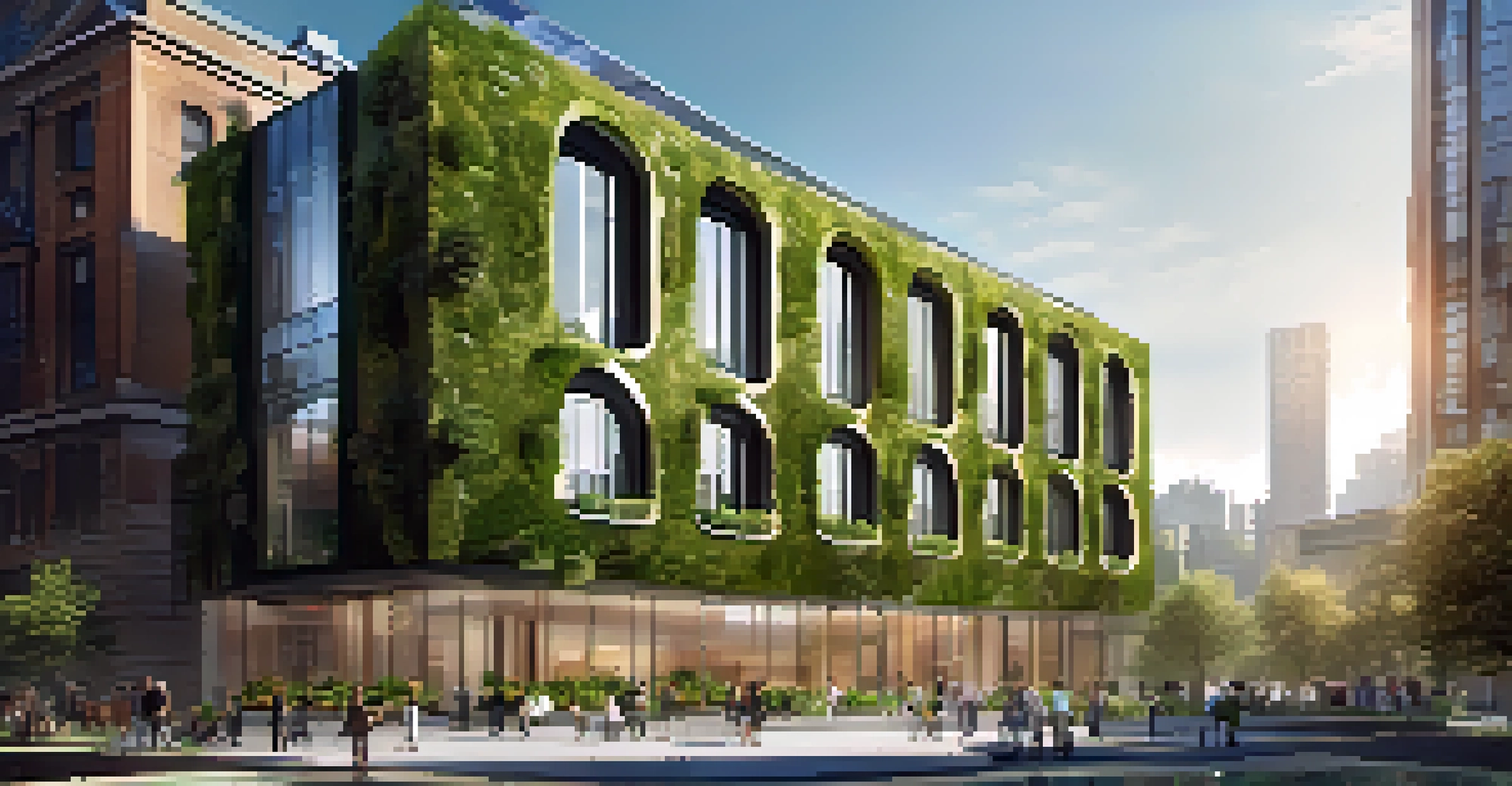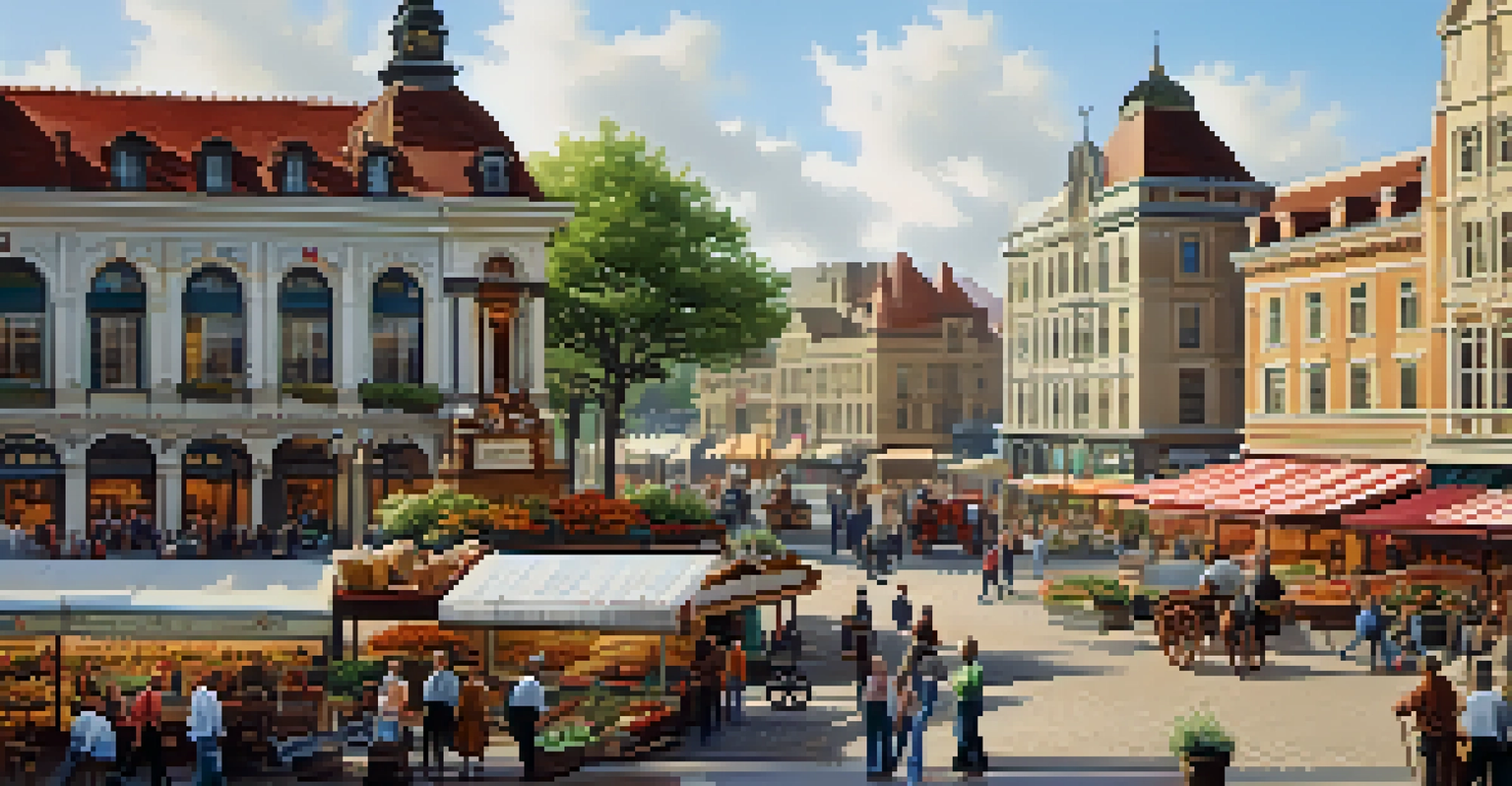Historic Architecture: A Reflection of Cultural Identity

Understanding Cultural Identity Through Architecture
Cultural identity is often expressed through the structures we build. Historic architecture serves as a tangible reminder of a community's values, beliefs, and history. From ancient temples to modern skyscrapers, each design reflects the uniqueness of its culture.
Architecture is the learned game, correct and magnificent, of forms assembled in the light.
Think of a Greek temple with its columns—it tells a story of democracy and philosophy. Similarly, a Gothic cathedral showcases the medieval emphasis on spirituality and artistry. These architectural styles form a rich tapestry that reveals who we are as a society.
When we walk through historic neighborhoods, we can feel the echoes of past generations. Each building stands not just as a physical structure but as a symbol of collective memory and pride, illustrating how architecture shapes our cultural identity.
The Role of Architecture in National Identity
Architecture often plays a crucial role in defining national identity. Iconic structures, like the Eiffel Tower in France or the Taj Mahal in India, not only attract tourists but also evoke a sense of national pride. They become symbols that unite people around a common heritage.

These landmarks tell stories of historical events, artistic movements, and societal changes. For instance, the Statue of Liberty represents freedom and democracy, while the Pyramids of Giza stand as a testament to ancient Egyptian civilization's grandeur.
Architecture Reflects Cultural Values
Cultural identity is expressed through architecture, showcasing the values and beliefs of communities across history.
Such structures remind us of our roots and shared history, reinforcing a sense of belonging. They act as anchors, connecting us to the past while inspiring future generations to appreciate and uphold their cultural legacies.
Influence of Geography on Architectural Styles
Geography plays a significant role in shaping architectural styles. The materials available in a region, along with its climate, influence how buildings are constructed. For example, adobe homes in the Southwest U.S. are designed to keep interiors cool in hot weather.
The building is a product of its time, and it reflects the values and ideas of the society that produced it.
Similarly, Scandinavian architecture often features large windows to capture natural light during long winters. These design choices reflect a harmony between the environment and the functionality of the structures.
This geographical influence also extends to cultural practices. In coastal areas, you might find homes raised on stilts to protect against flooding, showcasing how architecture adapts to local challenges while reflecting the culture's relationship with nature.
Historic Architecture as a Reflection of Social Values
The architecture of a place can reveal much about its social values. For instance, grand public buildings often symbolize the importance of civic engagement and community. Town halls and libraries are designed to be accessible, representing a society that values participation and knowledge.
On the other hand, the design of residential areas can reflect social hierarchies. Gated communities may signal exclusivity, while mixed-use developments promote inclusivity and accessibility. These architectural choices mirror the values and priorities of the society they serve.
National Pride in Iconic Structures
Landmarks like the Eiffel Tower and Taj Mahal foster national pride and connect people to their shared heritage.
By examining these structures, we can gain insights into how communities prioritize social interaction, education, and inclusivity. Architecture becomes a canvas that showcases the evolving ideals of society.
Preservation of Historic Architecture as Cultural Heritage
Preserving historic architecture is vital for maintaining cultural heritage. These structures are irreplaceable links to our past, offering insights into the lives, customs, and aspirations of previous generations. Preservation efforts ensure that future generations can engage with their history.
Organizations and communities often work together to restore and maintain these buildings, recognizing their significance. For instance, the restoration of the Colosseum in Rome allows visitors to appreciate ancient Roman engineering and social life.
When we protect historic architecture, we safeguard the stories they tell. Each restored building becomes a celebration of resilience, reminding us of the cultural narratives that shape our identity.
Modern Architecture and Its Cultural Implications
Modern architecture continues to evolve, reflecting contemporary cultural values. It often emphasizes sustainability, innovation, and functionality, showcasing a shift in priorities towards environmental consciousness. Green buildings, with their energy-efficient designs, symbolize a culture that values ecological responsibility.
Moreover, modern architecture frequently embraces diversity and inclusivity. Designs that accommodate various needs and preferences highlight a society’s commitment to accessibility and equality.
Preservation Ensures Cultural Heritage
Maintaining historic architecture is crucial for linking future generations to their past and cultural narratives.
As we observe modern architectural trends, we can see how they mirror our current societal challenges and aspirations. These structures not only serve practical purposes but also become expressions of our evolving cultural identity.
The Future of Architecture and Cultural Identity
Looking ahead, the future of architecture will likely continue to intertwine with cultural identity. As globalization influences local cultures, architects must navigate the challenge of blending tradition with modernity. This balance will shape the architectural landscape of the coming years.
Emerging technologies, such as 3D printing and smart materials, may lead to innovative designs that reflect our changing lifestyles. However, it’s crucial that these advancements honor and incorporate local cultural elements.

Ultimately, the future of architecture will be a dialogue between the past and the present, reminding us that our built environment is not just a series of structures but a reflection of who we are and what we aspire to be as a society.